
A Fifties family settling down for Thanksgiving, about to be poisoned en masse by cranberry sauce. Or so many feared in Fifty-Nine.
It was a red the likes of which truly flipped out Americans for the last Thanksgiving of the decade.
Just beneath the giddy Fabulous Fifties decade of I Love Lucy, hula hoops, bigger, better Caddies, Elvis and rock & roll was an intensely anxious fear that the most sacred American value, the freedom to eat fearlessly, was about to be stripped from citizens of all ages, races, faiths, and professions on the very day when hundreds of millions of unsuspecting families traditionally gathered in peace.
The danger was real and the threat was official, the alarm bell being sounded by what most Americans still considered to be the nation’s most trustworthy institution, the United States Government. In sober, solid grey words, it warned of an imminent attack on the last Thanksgiving Day of the decade by a menace that was already lurking in plain sight on big city grocery shelves, waiting behind small town kitchen cupboards, even preserved in jelly jars by Grandma’s own hands, picked on the family farm.
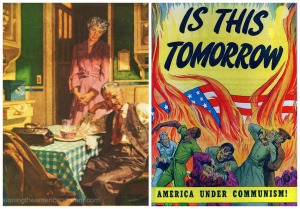
1950s anti-communism propaganda frequently used the threat to American home life as a Cold War tool. (www.envisioningtheamericandream.com)
Uncle Sam had been doing his gosh-darnest to catch up and win the “race to space” certain that if those Ruskies took hold of the heavens, the earth was surely soon to follow.
This crisis, however, was not a mere Red Scare where one just called the authorities if the Milk Man or Avon Lady who rang the doorbell outside seemed to be one of those monsters. Communist.

Keeper of the sanctity of her family’s home, the American Fifties housewife was mythologized as having a separate but equal type of power with hubby.
This was a battle cry for the fretful housewife to bravely defend her family’s safety and confront the threat that might even already have planted itself in her kitchen!
She must wage her own Cold War by opening her Frigidair and summon all valor to seize and immediately evacuate it of those deceptively gleaming domes of secretly poisonous red berries.
Every last one of them, and in every form. Sauce and relish. Spiced and sugared. Chunky and jellied. Jarred and canned. Room-temperature and chilled. Homemade and store-bought.
Otherwise, that family gathered in peace on Thanksgiving Thursday would be gathered together in death on Black Friday.
It was a death that would come by that mysterious disease it was still considered taboo to mention by name, a swift killer which could attack any organ of any person and without any known cure. Cancer.
And who in their right mind could ever imagine that cancer was now caused by that tart little traditional holiday berries every American since the Pilgrims and Indians had loved to crunch on Thanksgiving. Cranberries.
All this mayhem was sparked just seventeen days before Thanksgiving, leading to the San Francisco Chronicle’s blaring headline: “A Nation Without Cranberry Sauce!”
“The Food and Drug Administration [FDA] today urged that no further sales be made of cranberries and cranberry products produced in Washington and Oregon in 1958 and 1959 because of their possible contamination by a chemical weed killer, aminotriazole, which causes cancer in the thyroids of rats when it is contained in their diet, until the cranberry industry has submitted a workable plan to separate the contaminated berries from those that are not contaminated.”
Within hours of the announcement, the nation’s streets ran red riot with the spilled juice of the cranberry.
Department Stores were eagerly anticipating the first shopping day after Thanksgiving known as “Black Friday,” when an entire year of sagging sales could put a company in the “black” by that one day’s profit-earning potential.
For Cranberry Bog Owners, however, that date of Secretary Flemming’s announcement, November 9, 1959 became a “Red Monday,” a dagger in the heart of the industry’s biggest annual sales period, plummeting them into “the red” of debt and threatening to destroy their very existence.
Secretary Flemming had carefully composed his declaration based on two factors: one, testing proved that samples of cranberries grown in Washington and Oregon were “contaminated” with traces of the weed killer, and two, there could be no arbitrarily set level of how much weed killer was safe to ingest.
He knew it could decimate the cranberry industry, but declared, “I don’t have any right to sit on information of this kind.”
Up at the Ocean Spray Cranberry Company in Plymouth County, Massachusetts, the face of its president George C.P. Olsson went red as a, well, beet.
Olsson declared the Secretary’s announcement was “ill-informed and ill-advised” and that his intentions were a “cranberry witchhunt,” evoking a touchy word all too recently associated with the paranoid character attacks on anyone suspected of even mild communist sympathies, invoked by Senator Joseph McCarthy during his Senate committee hearings.
The night before breaking his news, Fleming had called to warn Olsson, but refused to delay the announcement.
Although its name was synonymous with cranberry production, Ocean Spray was actually the headquarters of the largest cranberry growers association, including about three-quarters of the nation’s hundreds of independent Cranberry Bog Owners. It could set quality standards for what kind of berries would be accepted in the collective, but not direct authority over any one farmer.
Some Bog Owners clamored for President Eisenhower to fire Flemming. Some reporters speculated that Flemming was trying to line himself up as a potential Republican Vice Presidential candidate.
He was surely the only Secretary of Health, Welfare and Education to be hung in effigy.
Others suspiciously wondered in editorials why other traditional Thanksgiving produce favorites weren’t put under the same level of scrutiny.
Was Flemming in secret league with some sinister Sweet Potato Syndicate or on the secret payroll of a Brussel Sprout Bunch?
In fact, Flemming was the very model of non-partisan public service integrity, serving Presidents of both parties.
The Hudson River Valley native had started as a member of Franklin D. Roosevelt’s Civil Service Commission, helped streamline government under former President Herbert Hoover’s commission appointed by Harry Truman, later chaired Nixon’s conference on aging and received the Presidential Medal of Freedom from Clinton.
Three years earlier, the chemical poison in question had first been approved by the Agricultural Department for the purpose of killing other invasive plants which threatened to choke off those of the cranberry plants.
However, this approval was only on the condition that it be used only after the harvesting of berries, before any fruit began to develop. Otherwise, it could make its way into the edible berries.
These instructions were strictly outlined by the government and furthermore widely and specifically disseminated in warning and educational newsletters and reports by Ocean Spray and other industry leaders to the collectives of Bog Owners who pooled their berries in consortium.
The chemistry company which made the weed killer, American Cyanamid Company, had twice applied to the Food and Drug Administration for approval of “a tolerance of 0.7 parts per million.”
As assiduously chronicled by Mark Ryan Janzen, the nation’s expert on the entire episode, in his 2010 Texas A & M University doctor of philosophy dissertation, “The Cranberry Scare of 1959,” the FDA refused the approval on the grounds that first, testing of the chemical properties of the weed killer hadn’t been finished and second, that when the testing was finished, it showed that the weed killer was a carcinogen.
The FDA refused to offer an conclusive decision on what constituted a dangerous threat level of the chemical, instead declaring that it would enforce a “zero tolerance” policy on any amount found in cranberries.
Ocean Spray had supported this, warning its collective of bog owners in a September 18, 1959 letter that no berries which had been treated with the weed killer after that date would be accepted into the massive vats of boiling cranberry sauces. It even required that the bog owners agree to certify their agreement to this, punishable as perjury if violated.
Sure enough, when the FDA began testing cranberries for traces of the weed killer a month later, they found it in berries which had shipped out across the Washington and Oregon state lines.
It was impossible to distinguish which of the tens of millions of berries had come from which farm, but clearly some bog owners had signed the agreement but clearly went ahead and used the weed killer anyway.
In his rush to prevent cranberry cancer contraction, however, Secretary Flemming had failed to state that nobody knew the degree to which the national crops were potentially contaminate and unintentionally set off more fears when asked to instruct the public on how to buy “safe” cranberrries or whether sauce previously purchased was safer than what was being stocked on the shelves for Thanksgiving 1959.
No, the replied soberly, he consumer could not detect what was alright…and what was not.
At that moment over half of the national cranberry crop was in the hopper, the red relish squirted into cans which hummed along assembly lines, packed into boxes, loaded onto trucks and being driven to supermarkets.
And the entire process stopped, dead cold.
Food chains cancelled all orders.
Cans of cranberry jelly and jars of cranberry relish returned to the warehouse.
Hundreds of millions of cranberries were seized, quarantined and destroyed.
And before he concluded his press conference, Secretary Flemming had a special directive for the American Housewife soon to head off to market with her shopping list of Thanksgiving food, loading her grocery cart with canned cranberry jelly or jarred cranberry relish or fresh cranberries:
“If unsure where the cranberries came from, to be on the safe side, she doesn’t buy.”
That did it.
Nevada declared it illegal for any supermarket, grocery store and corner mom-and-pop shop within its borders to carry any cranberry products.
Random dragnets were conducted by a network of Ohio, New York, California and Michigan state health board food officials, stealthily sliding down the aisles of every A&P, Piggly Wiggly and Pathmark Food Store to ferret out every last cursed can.
The Governor of Oregon immediately ordered that not even one can of cranberry jelly remain on the commissary shelves of all state prisons, fearing that incarcerated men might make good on a threat to riot on Thanksgiving if served the poisonous relish.
Restaurants crossed “Cranberry Sauce” off every printed menu with red pens, and hotels placed ads assuring the public that if they dined there for Thanksgiving, there would be none of the poisoned berries.
There was the irate father in the Chicago suburbs who phoned his daughter’s high school board president at home, after she chattered on about a spoonful of the red killer being dolloped on her lunch tray in the cafeteria that afternoon.
An hysterical maiden aunt in Mobile called an ambulance when, while washing cranberries to make her family’s cranberry chutney recipe, a berry bulletin blared over the radio.
A Boston beatnik poet scribbled some cranberry doggerel on a blackboard in a coffee shop and got his picture in Life.
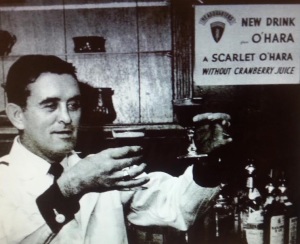
Boozers could drown their cranberry sorrow in the glass of a newly invented Scarlett O’Hara cocktail without their favorite poison. (Life)
Iowa church ladies were warned from the pulpit to first wear rubber gloves and face masks if they had to pick up every last little red monster in order to rid the sin from hearth and home.
With only seven weeks before the start of the 1960 presidential election primaries, both the Democratic and Republican frontrunners stepped out to prove their manly fearlessness in the face of the tart ones.
Republican Vice President Nixon ate himself four heaping helping of cranberry sauce in front of the newsmen while campaigning in Wisconsin.
Democratic Senator John F. Kennedy lifted a tall glass of crystal clear bright red cranberry juice and downed it without bitter aftertaste, then hoisted a second frosty red one after that. After all, he was from Massachusetts, Land of the Cranberry.
Other food packagers tried to fill the vacuum. Phone lines at fancy imported food shops in New York, Miami, Chicago and San Francisco were jammed in a rush for jam made of lignonberries, a foreign cranberry cousin.
Despite even the jump to astronomical prices for this already expensive substitute, the tiny U.S. supply entirely sold out immediately and no amount of Swedish work ethic could produce enough batches to ship across the Atlantic in time for America’s turkey day.
A Madison Avenue man with a gelatin company client was electrified with the idea of rushing the new “Mockberry Sauce” to the mass market. A concoction like so many weird “mock” foods intended to simulate taste and texture of unavailable food, “Mockberry” was to be whipped up with lemon juice, artificial cherry flavoring, sugar, beet juice with its central ingredient being that most ubiquitous of Fabulous Fifties miracle, gelatin.
Lead time to shoot and place full-color “Mockberry” magazine advertisements, alas, prevented it from ever springing off the drawing board.
In fact, most of the national weekly magazines at the time of Flemming’s November 9 announcement had already been typeset and were on their way to the nation’s post offices to be delivered a week before Thanksgiving. And many of them featured full page advertisement spreads of American families joining for Thanksgiving dinner – with the bright red cranberry sauce in plain sight.

There wasn’t time to reshoot a Saturday Evening Post Coca-Cola advertisement photo spread for Thanksgiving 1959 without the cranberry sauce. And there was no photoshop.
Meanwhile, called to testify before Congress, Dr. Boyd Shaffer scoffed at the scare as if was all some leftover Halloween hokum.
Why, it would be impossible to expose humans to aminotriazole in amounts that would be toxic, and besides there was no proof that it caused cancer in people.
And who would know better than he?
After all, he was part of American Cyanamid’s Test Team, the chemical company that invented the weed killer.
Without any sense of irony, he went on to describe the pesky weed that was especially good at threatening the roots of the cranberry growths in the water, which could strangle their roots and destroy the crop before it even began. It was called “panic grass.”
In the meanwhile, the lead singer of the Groovers, Robert Williams, dashed out a one-hit rock and roll wonder, “Cranberry Blues.”
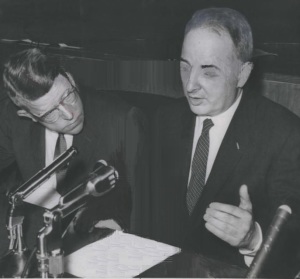
Ocean Spray President Olsson and Secretary Flemming went public with a solution on the cranberry crisis.
As the Cranberry Crisis mushroomed, Ocean Spray’s President Olssen got on the horn with the Agricultural Secretary Ezra Taft Benson, demanding that the President declare a state of emergency in the five leading state producers of cranberries, Wisconsin, Oregon, Washington, Massachusetts, and New Jersey.
Reporters looking for catchy buzzwords to fuel the fear and sell papers seemingly reinforced a connection between the words Cranberry, Communism and Cancer by dubbing these regions as “red zones.”
A rabid anti-communist, no-nonsense Mormon leader, Benson insisted on ensuring the financial stability of the nation’s agricultural production. Flemming held his ground. His duty was protecting the health of American citizens not the prosperity of the food-processing and the chemical industries. They worked rapidly on a compromise.
On November 19, Ocean Spray President Olsson sat beside Secretary Fleming in a joint press conference to announce immediate nationwide testing of fresh cranberries and if found not to be even infinitesimally contaminated, these berries would then be crated and bagged with a label attesting to the fact that they were “Approved” for consumption.
The tedious process was conducted not only by government scientists, and state agricultural authorities, but university researchers were pulled off of other projects to help in the analysis, as a civic duty.
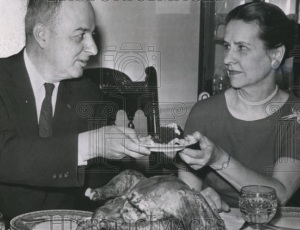
A very suspicious Mrs. Arthur Flemming hands over a plate of “approved” cranberry sauce to the man who caused the whole crisis.
It proved to be a lot of work that was too late in saving the season, resulting in a devastating 20 % decrease in cranberry sales. An internal Ocean Spray poll reported that from a surveyed group 91 % of which had previously served cranberries at the holiday season, 51 % of those asked said they did not that holiday season, and 47 % declared that they would never again place the little red berries in any form on their table.
Secretary Flemming also apparently made one great concession. While it wasn’t exactly a matter of him eating crow over the whole Cranberry Crisis, it was a matter of him eating cranberries.
He and his wife posed for a photo op of an early Thanksgiving dinner between them, with his very dubious Cabinet Wife passing him a tray of cranberry sauce as if it were an inedible poison.
There was also a little bit of a backfire on the public relations front at the White House.
The press office had assured reporters the President and Mrs. Eisenhower would indeed be eating some of the nationally “approved” cranberry sauce at their White House Thanksgiving dinner table.
Everyone believed it until Mamie Eisenhower’s friend, the actress Rosalind Russell, who had been a guest with her husband for the holiday meal, emerged from the White House and let it slip that the First Lady insisted that applesauce, not cranberry sauce be served in the nation’s first house.
In the end, Uncle Sam fixed the cart he broke, offering subsidies for unsold cranberries which were tested and found to have no pesticide residue. And making a little announcement, after the holidays, that 99 % of the cranberry crop had not at all been contaminated.
Yet, in the long run, the Cranberry Crisis of 1959 ignited ye olde American Ingenuity, the House of Ocean Spray converging the best minds in advertising, marketing, taste-testers and recipe-creators, forging a whole new public appreciation of the humble cranberry.
The move gave birth to the likes of Orange-Flavored Dried Cranberries, CranApple and CranGrape Juices.
It led to Technicolor ads featuring recipes of cranberry bread, cranberry cocktails, cranberry cookies and cranberry salads in popular women’s magazines.
It even pushed Cranberries as an ideal treat for that other bright red holiday of bittersweet sentiments, Valentine’s Day, and made the case for the fruit’s distinctive tartness as an ideal flavor to cool the palate in summertime.
In the spirit of public visibility, and good tourist traps, Ocean Spray began offering tours to families on summer vacation, squeezed in between a stop at Plymouth Rock and Plymouth Plantation, making the Cape Cod area a veritable Thanksgiving Disneyland.
At the end of their tours, consumers could buy a niftly little booklet chuck full of cranberry recipes (the Cranberry Museum is now closed).
Despite it occurring in an era of frozen chicken croquette dinners in aluminum trays, boxed corn muffin mix preserved with unpronounceable ingredients and jars of maraschino cherries shot through with fire-engine red dye, the Cranberry Crisis of 1959 was the clarion call for a future generation of consumer protection and healthy food advocates.
Suddenly, citizens would start to read the labels on what they were buying, or at least face the grim fact that elderly aunts in Priscilla Pilgrim colonial costumes did not pick, boil and bottle the cranberries by hand all year long, like Thanksgiving elves.
This wasn’t simply the manufacturing of synthetic leather Naugahyde or fabric Dacron, which consumers could sit on or dress in, and then take step away from if they didn’t like the feel of it.
This was standard Americana, autumnal comfort. This was ingested into the body.
Who knew that tradition could be processed with chemical technology?
The seeds of this holiday havoc had actually been planted a year before it happened, when Congress had passed the “Delaney Clause,” of the Food Additives Amendment of 1958, which stipulated that, “no additive shall be deemed to be safe if it is found to induce cancer when ingested by man or animal, or if it is found, after tests which are appropriate for the evaluation of the safety of food additives, to induce cancer in man or animal.”
Cranberries would not only survive on a half-century more of Thanksgivings after the crisis, but downright thrive when the real truth of it was revealed, that the little red berries are a source of the big “C,” as in Vitamin C.
The real demon which had been feared to be lurking at the bottom of every can of cranberry sauce was, of course, the far darker “C.”
In fact, the internal Ocean Spray Company poll showed that, of the pool of those who had previously served cranberries, a whopping 55 % said they had not eaten or served any for Thanksgiving 1959 for one reason: fear of cancer.
The Cranberry Crisis soon passed into history, its association with cancer replaced five years later by yet another warning from Uncle Sam about a far darker threat to not just legions of beleaguered American housewives searching for a safe and healthy way to relieve the anxieties of their days, but every citizen.
Most people didn’t see this one coming, but it would prove to be such a whooper that it made cranberry relish look like applesauce.
As a San Francisco Chronicle reporter detailed in the paper’s story “A Nation Without Cranberry Sauce!” on November 11, 1959:
“One housewife whom we know says she dumped her prepared cranberry jellies into the garbage can, then sat down and smoked a cigarette in relief at having just been saved from cancer.”

A cranberry bog in Chatsworth, New Jersey, photographed by author and photographer Hien T. Nguyen. (www.neihtn.wordpress.com)
Categories: Advertising & Marketing, Food, Holidays, Thanksgiving
Tags: 1950s, advertising, Cold War, Dwight Eisenhower, Thanksgiving, U.S. Holidays
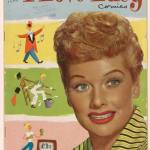

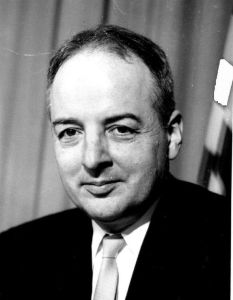

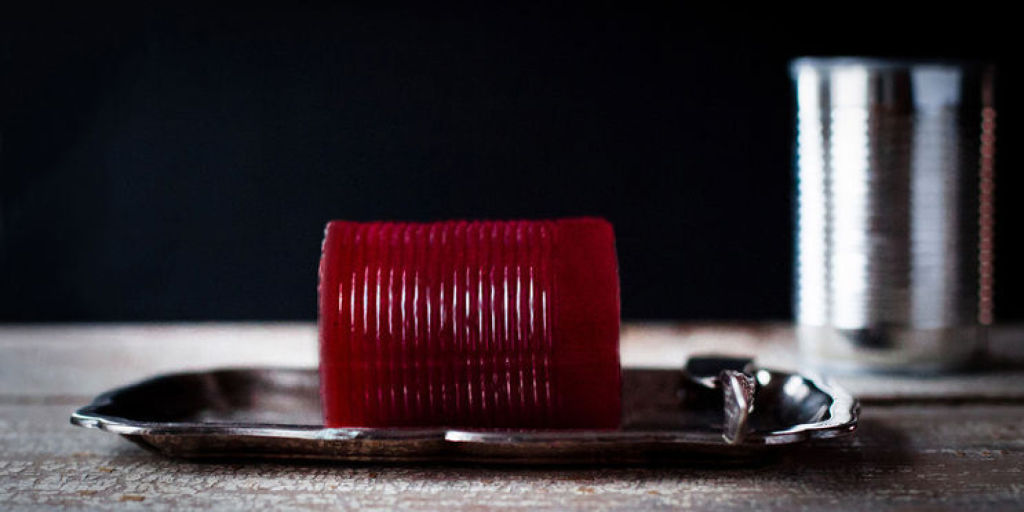
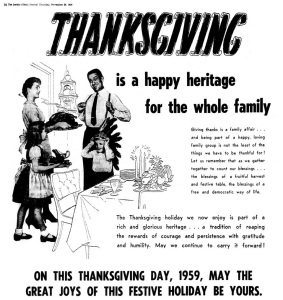

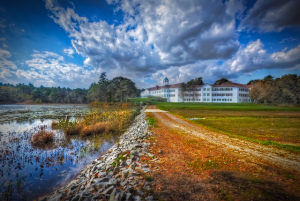

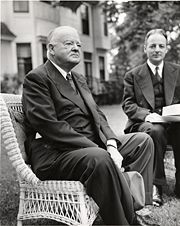
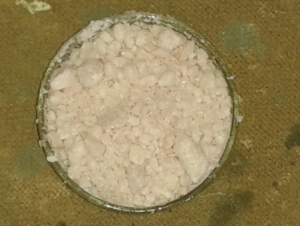
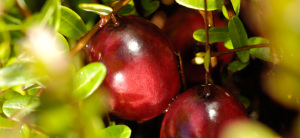


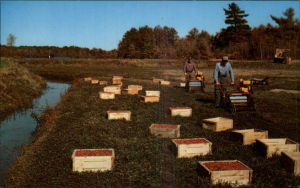
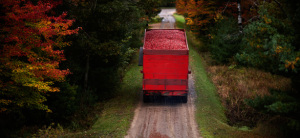
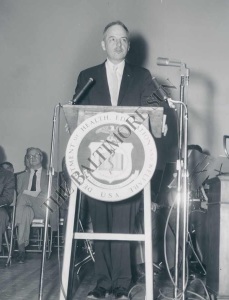

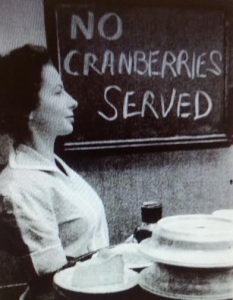

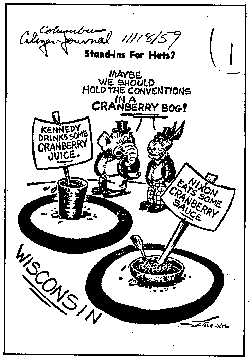
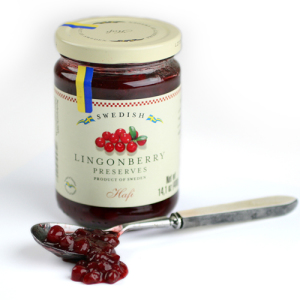
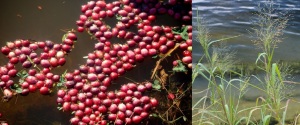
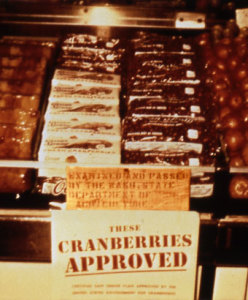


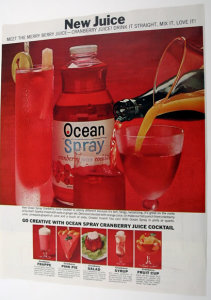
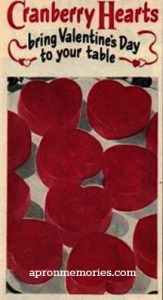
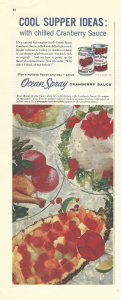
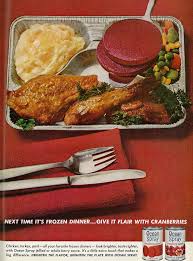
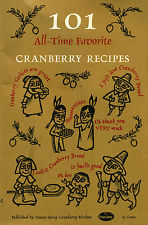
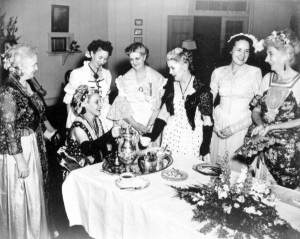

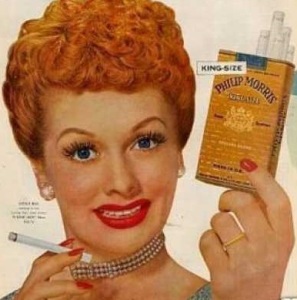
 The First White House Valentine’s Day Dance: the McKinleys, Ragtime, Racism & The Romance of the “Ghost Girls”
The First White House Valentine’s Day Dance: the McKinleys, Ragtime, Racism & The Romance of the “Ghost Girls”  The Santa Claus You Must Never See, If Yule Dare
The Santa Claus You Must Never See, If Yule Dare  The Nixon Family’s White House Halloween Parties of the Seventies: Pumpkin Pictures
The Nixon Family’s White House Halloween Parties of the Seventies: Pumpkin Pictures  A Dozen First Lady Fourths: Presidential Wives’ Independence Days Radically Diverse
A Dozen First Lady Fourths: Presidential Wives’ Independence Days Radically Diverse  Presidents Voting Photos: A Clue to Chief Executive Ego
Presidents Voting Photos: A Clue to Chief Executive Ego  Merry Christmas vs. Happy Holidays: Facts Bring It Together
Merry Christmas vs. Happy Holidays: Facts Bring It Together
Carl;
What sets your blog apart from countless others is your research, presentation, and striking graphics. This topic was way out of left field and great fun reading! Dare I say, it offered food for thought?
WOW! Thank you very very much Mark. Those are words I can live by. Truth be told, this was a really difficult article to pull together in terms of nailing down details without getting too belabored about it all. Somehow, the story really grabbed me for what it said about human nature, the power of the media feeding a frenzy, some menacing aspects of chemical technology and the “little guy,” like Secretary Flemming who conducted himself for the good of the people, a figure not often remembered but actually often encountered in history. A forgotten person who tried to make a difference. But thank you so much for your generous observations, particularly on this story. Cheers.